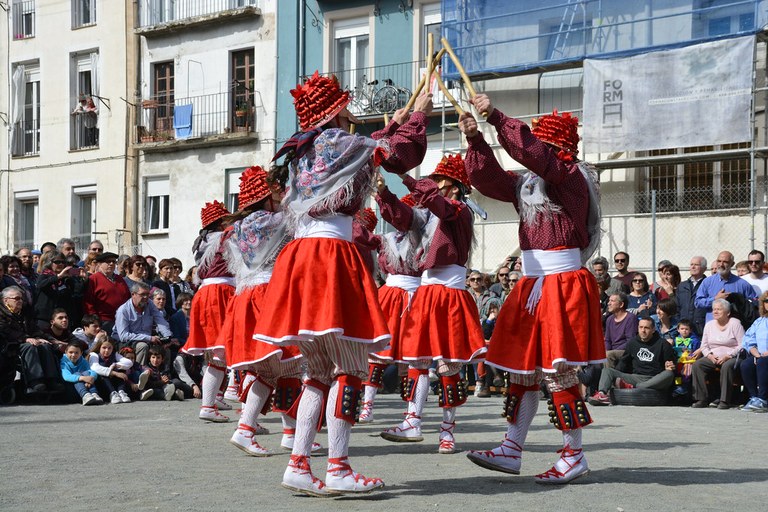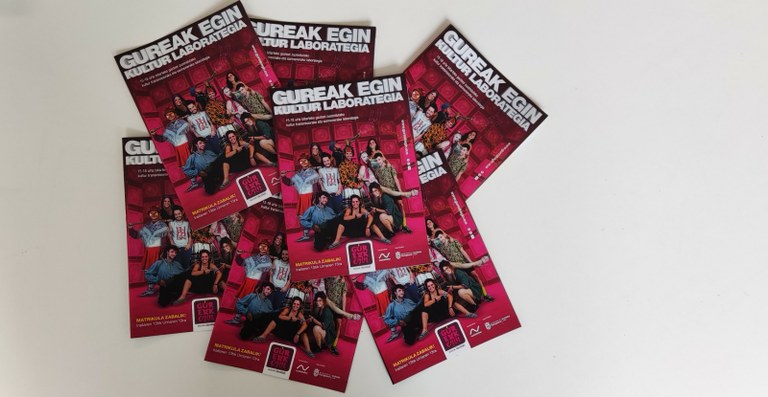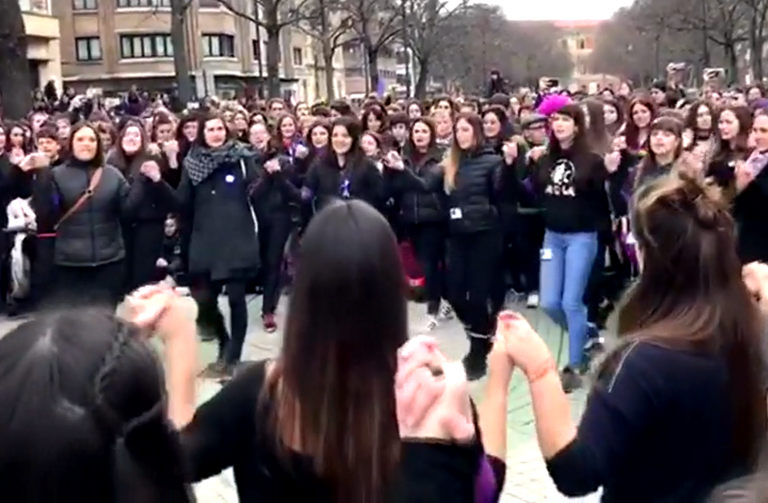
- To do our, so that ours does not do it. It is a laboratory of transmission and cultural creation that has recently been created in Pamplona/Iruña. With the pleasure of creating, they want to promote the use of Euskera and the relations in Euskera among young people aged 15 to 18 years. To do this, the program will focus on dance, music and theatre, and will be assisted by several creators in the area. In the dance section, the programme will be led by Aritz Ibáñez (Pamplona, 1979), who will participate in the Official Section. In 2018 they have started working in a direction similar to that of Iruin, but the format is new. It also says it's going to be a lab for them. The goal is for both young and drivers to return home full of backpacks.

Do our own? Are we lost?
We would like to turn the concept right around. Give a positive tone to something negative in itself. Because we have to do our things so that we don't do our own thing. That is what is proposed through this laboratory.

Is it therefore the Gureak Egin laboratory?
This is a lab based on Artedraman. It's based on dance, music, theater, Euskera and transmission. It is often heard whether the transmission has been interrupted and if this does not prevent the development of language. That the transmission of Basque culture contributes to the consolidation of Euskera and vice versa. In recent years it has become a topic that moves along several days and works: How can creativity help to make more use of the Basque language? The laboratory Gureak Egin aims to link this creative pleasure with the use of the Basque.
Who have you started the road, and who do you look at?
It is a laboratory aimed at young people from the Region of Pamplona aged 15 to 18 who study in Basque. The project came to us from the Department of Education of the Government of Navarra. It will be assisted by the City Council of Pamplona and the Euskokultur Foundation has taken over the project. Those of us who will guide will be Ion Celestino in the music, Oier Zuñiga in the theater and I [Aritz Ibañez] in the dance. We will walk in a confused environment, as we will not work the three disciplines separately. We'll try to see what each one has, how they rub, or understand the three disciplines as if they were a whole.
Dance, theater and music march at once for you?
They can also be understood separately, but in the process of preparing all of this, we realized that there were things that didn't make sense to do on their own. We found connections in the topics we proposed. We often talk about interrupting transmission, but it can also be an interdisciplinary pause. At one time or elsewhere in the world, all of these disciplines are understood as one. Here we also have models of this kind, in the artidramas, in the libertisms and in the masks everything joins and helps. We have also proposed the laboratory in this regard, considering it to be richer and more interesting.

The project goes beyond the offer of leisure, right?
If it's free time, one of the main goals of art or libertinage is to have a good time, but we'd also like to take something else home. Perhaps today we want to offer them references that are not offered to them in families, in schools, on television or on social networks. It's about giving some examples, showing models. From some of the current references we will offer you the extremes so that you can type and access other references.
So, put your eye on the cultural references.
We will focus on the experiences that exist today in the Region of Pamplona. If, at any given time, they decide to set in motion a creative process so that these references can be found in music, theatre or dance, we often want to make young people see the references that are left out.
The goal is to give voice and tools to young people at once, right?
Yeah, that's it. It is about providing tools, but working and creating. That it's not one-way information, it's important that they also act. Because that's going to make you want to go your way out of the lab. We will work, for example, on dance jumps or the forests of Zuberoa. We will try to explain how the jumping system works, how they are built and what things can be done from the point of view of dance or music. We think it's important to know the system first and then see what we can do with it. With the peers too. We will see how the ancient pastors or labourers of Zuberoa expressed through music what they saw looking at the sky. How can we take advantage of it today and in Pamplona? How can we express what we see in our neighborhoods through music or theater?

And all of that in Basque.
That is one of the objectives. To relate the cultural transmission on the one hand, and on the other, the positive feelings or emotions that a creative process of this type brings us, with the use of language. Let's see if we can get the first contacts between these young people who don't know each other to be in Basque. I think the key is to create the initial relationships in Basque, because then it is easier to continue in Basque. And so that what we do next is not 'in favor of the Basque,' but of the Basque and the Basque.
You mentioned the jumps. What will you be working on specifically with regard to dance?
We are still completing the programme, but for now we are planning to work on the system of dance jumps and soka-dantzak. We want young people to know and understand how the system of leaps between exercises and games works when it comes to dance and music. To this end, for example, we will have the presence of Baigorri’s neighbour, Oihan Indart, who will provide assistance. We want young people to have a series of jumps created by themselves and to learn from those who have already been born. We will also work the soka-dantzak, related to the song. We will meet with the demands of 8 March and the different soka-dantzak that have been created in recent years. We invite the girls who participate in the soka-dantza of March 8 to tell their experience and show us the soka-dantza. In this case dance has served to claim, and so we want to show you what dances are for today. What new functions we can give them. We will see the fundamentals of the system so that they can then create their own soka-dantzak in situations that are useful to them, for example.

How have you organized the course?
Classes will be on Fridays from 16:30 to 18:30. At each school we will work on different concepts through dance, theater and music; sometimes, the guides will guide us by ourselves, sometimes mixed. Once a month, guests will come for young people to receive other knowledge and models. They will be creators of the area of Pamplona, so that they may also be referents. How did they start? What motivated them? Why are they speaking in Basque? And we'll also work on practical things with guests. We have completed the course in modules and at the end of them there will be publications to show the things we have worked on. It may be that we have organised a session to show what we create or already participate in the events that take place throughout the year. For example, in Iruinko or in the soka-dantza of March 8.
Finally, it’s up to you to extend your invitation!
We didn't have that opportunity in our youth. Today, it seems to me that it can be interesting to complete the training and action of the young people who participate in the dance group. Dance is taught in dance groups, but there may be no contact with other disciplines. It can be a complement for all those engaged in dance, theater, song or bertso; a broader panorama to open and see windows. I would like to extend the invitation to young people with this kind of sensitivity and curiosity. I think it will be an opportunity to have a good time with each other and learn from each other.